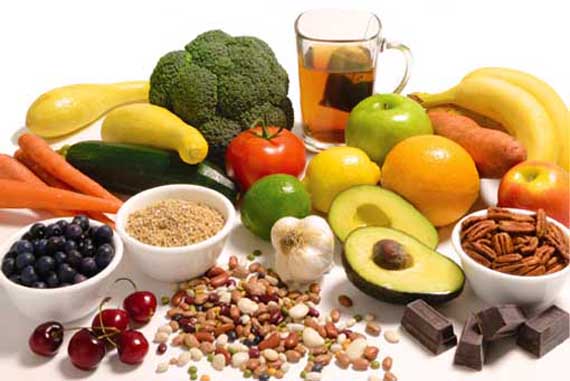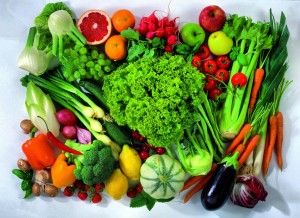By Anthoney J. Andersen – Steroidal.com
Fall has begun, which means we’re that much closer to the holidays. As delicious as holiday cooking is, it is also a time where people find themselves packing on the unwanted pounds due to the high caloric and saturated fat content found in most holiday dishes.
You may have heard the term ‘clean eating’ being thrown around while researching possible diet regimens or when looking to prepare a healthier meal plan for you and your family.
But what does ‘clean eating’ actually mean?
Follow along, as we provide a foolproof guide to help you better understand the growing popularity behind the mysterious expression.
You’re probably asking yourself, “What does it mean to eat clean? And how do I go about cleaning up my diet?” According to Eatingwell.com, clean eating simply refers to a way to refresh your eating habits by eating more of the best and healthiest options in each of the food groups – while eating less of the not-so-healthy-ones.
This means embracing whole foods like vegetables, fruits and whole grains, as well as healthy proteins and fats. The goal is to consume foods that are un-or minimally processed, refined or handled –making them as close to their natural form as possible. This also means cutting back on refined grains, added sugars, salt and unhealthy fats.
And since you don’t have to count calories or give up whole food groups, it’s a simple plan to follow.
WHAT COUNTS AS PROCESSED?
Most shop-bought foods will have been processed in some way. Examples of common processed foods include:
- Breakfast cereals
- Cheese
- Canned vegetables
- Bread
- Savory snacks, such as chips
- Meat products, such as bacon
- Microwave meals
Food processing techniques include freezing, canning, baking, drying and pasteurizing products.
“Not all processed food is a bad choice,” says Sian Porter, consultant dietician and spokesperson for the British Dietetic Association. “Some foods need processing to make them safe, such as milk, which needs to be pasteurized to remove harmful bacteria. Other foods need processing to make them suitable for use, such as pressing seeds to make oil.”
Processed food includes everything from a hot dog, to jarred organic pasta sauce and instant oatmeal. Changing the form of natural food includes cooking as well – so even steamed broccoli is technically processed, although minimally.
“Processing can also include altering the consistency or taste of food to make it more enjoyable,” says Jessica Fanzo, assistant professor of nutrition at Columbia University. “So that delicious post-workout kale-celery-spinach-banana smoothie you had? Enjoy that virtuous feeling knowing that you were likely able to down that giant amount of greens because your treat was somewhat processed.”
Still, even though pasteurized milk, kale smoothies and instant oatmeal are all processed – they are not on the same playing field as doughnuts and Diet Coke.
“The key is to avoid foods that are ‘ultra-processed,’” says Fanzo – “basically, anything food-product-like or ready-to-heat.”
THE EAT-CLEAN DIET
“The ‘Eat Clean Diet’ is a lifestyle way of eating that allows you to eat more, weigh less and become the healthiest you can be,” says Tosca Reno, author of ‘The Eat Clean Diet’ series.
According to Reno, eating clean encourages a lifestyle approach of exercise and a diet plan of unprocessed whole foods.
“Not only will you lose about three pounds a week,” says Reno, “but you will see dramatic changes in the way you look and feel.”
Reno’s diet plans range from 1,200-1,800 calories, eaten in five to six small meals throughout the day – which are designed to ‘fire up the metabolism.’ Practicing portion control helps dieters avoid the dreaded calorie counting.
Written in a motivating and reader-friendly manner, Reno’s books place the emphasis for weight loss and good health on 80 percent food, 10 percent training and 10 percent genes.
WHAT CAN YOU EAT?
Eating clean involves not only choosing the right foods to eat, but also avoiding all of the junk foods and processed foods that are cheap and so readily available. The keys to good health and proper nutrition are as follows:
- Eat whole foods: As mentioned earlier, these are foods that haven’t been tampered with in the lab or manufacturing plant. The foods you eat on this plan come straight from the farm – whole fruits and vegetables, whole grains, grass-fed and free-range meats, low fat dairy products, unsalted nuts and seeds.
- Eliminate refined sugar: Refined sugar provides nothing beneficial, just calories. Other sweeteners can be used, but with all the good foods you add to your diet, refined sugar has very little place in the eat clean diet.
- Cook your own meals: Instead of buying meals in a box, cook meals from scratch. Clean, whole foods need little preparation beyond chopping and sautéing to make satisfying, delicious meals your family will enjoy.
Reno advises that when preparing your meals, make sure that each meal is between 200-300 calories, and that you make sure that you never miss a meal, especially breakfast. Be sure you’re drinking at least eight cups of water daily, as well.
THE WRAP UP
In a society where people are constantly on the go, eating fast food and ready-made frozen dinners are often the go-to options. However, consuming these high caloric and fatty processed foods could have damaging effects on your body down the road.
In other words, think long-term, and take the time to cook you and your family nutritious home cooked meals that will be rewarding for both your taste buds, and your overall health.








